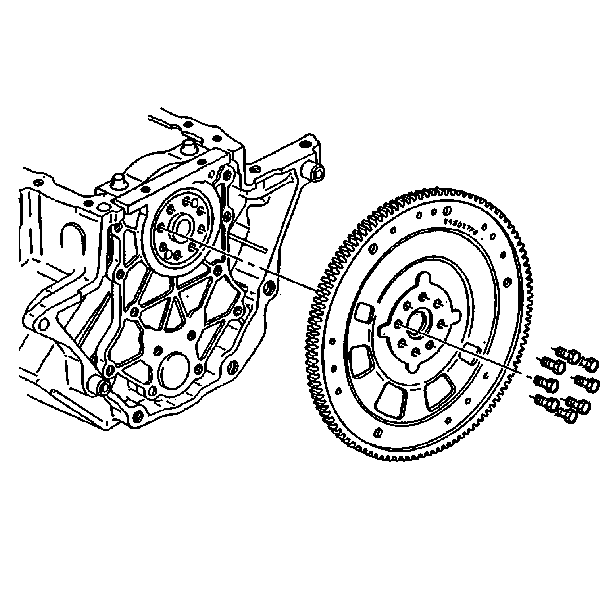Removal Procedure
Tools Required

- Remove the transaxle. Refer to Transaxle Replacement in Automatic Transaxle
On-Vehicle Service.
- Remove the eight bolts attaching the flywheel to the crankshaft
flange and discard them. Use the J 37096
in order to prevent crankshaft rotation.
- Remove the flywheel.
Installation Procedure

- Install the flywheel.
- Install the new flywheel bolts. Use the J 37096
in order to prevent the crankshaft from rotating.
Tighten
Tighten the flywheel bolts to 15 N·m (11 lb ft).
Use the J 36660-A
in order
to rotate the bolts an additional 50°.
Notice: Use the correct fastener in the correct location. Replacement fasteners
must be the correct part number for that application. Fasteners requiring
replacement or fasteners requiring the use of thread locking compound or sealant
are identified in the service procedure. Do not use paints, lubricants, or
corrosion inhibitors on fasteners or fastener joint surfaces unless specified.
These coatings affect fastener torque and joint clamping force and may damage
the fastener. Use the correct tightening sequence and specifications when
installing fasteners in order to avoid damage to parts and systems.
- Use the following procedure to measure flywheel runout:
| 3.1. | Install a dial indicator on the engine block and check the flywheel
runout at three attaching bosses. |
| | Important: The crankshaft end play must be held in one direction during this check.
Runout should not exceed 0.38 mm (0.015 in).
|
| 3.2. | If the runout exceeds 0.38 mm (0.015 in), attempt to correct
by tapping the high side with a mallet. |
| 3.3. | If the condition cannot be corrected, replace the flywheel. |
- Install the transaxle. Refer to Transaxle Replacement in Automatic
Transaxle On-Vehicle Service.


